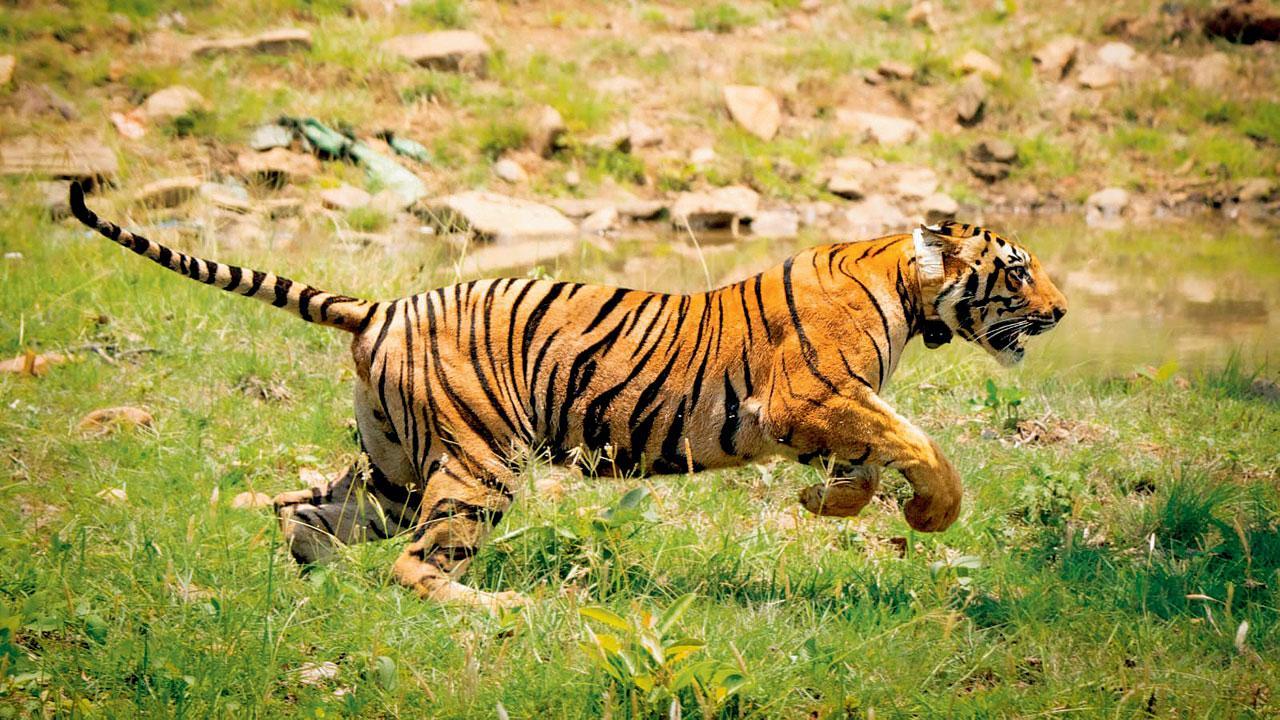Two tigresses translocated to the Navegaon Nazira Tiger Reserve (NNTR) in Maharashtra are thriving, data from their radio collars shows. One of the tigresses has even crossed the border into Madhya Pradesh and has taken to hunting free-roaming cattle.
The tigresses, named NT1 and NT2, were translocated earlier this year from Tadoba Andhari Tiger Reserve and Armori range in Gadchiroli, respectively. NT1 has traveled an impressive 1,458 km (straight line distance) to reach Madhya Pradesh, while NT2 has settled down in NNTR, roaming 958 km (straight line distance).
NNTR has a core area of 656.36 sq km and a buffer of 1,241.24 sq km. According to the All India Tiger Estimate report of 2022, the reserve has 11 unique tigers, which is considered low-density as it has the potential to hold 20 adults.
The success of NT1 and NT2’s translocation will be crucial for the entire project. If the tigresses continue to thrive, it could boost tourism and provide livelihood opportunities for people living around the reserve. It could also be an important measure in reducing human-wildlife conflict in the Brahmapuri landscape.
Data shows that NT1 is currently preferring free-ranging cattle to wild prey. Further observation is needed to determine whether this preference poses a threat to human habitation.
The translocation project is intended to address the issue of Human-Wildlife Conflict (HWC) in the region. Chandrapur district, where NNTR is located, has a high density of tigers and a high rate of HWC.
NNTR is the 46th reserve to be established as part of Project Tiger. India’s tiger population is estimated to be between 3,167 and 3,925, with an annual growth rate of 6.1%. Madhya Pradesh has the highest tiger population, at 785, while Maharashtra ranks fourth with 444.
Overall, the translocation of NT1 and NT2 is a positive development for tiger conservation in India. The project has the potential to boost tourism, provide livelihood opportunities, and reduce human-wildlife conflict. Only time will tell whether NT1’s preference for free-ranging cattle will pose a threat to humans, but her continued success is crucial for the overall project.
